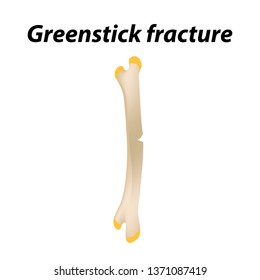Translating The Scientific Research Of Cold Laser Therapy: Exploring Its Mechanisms And Consequences
Translating The Scientific Research Of Cold Laser Therapy: Exploring Its Mechanisms And Consequences
Blog Article
Authored By-Bendix Roberson
You may have come across cold laser treatment as an encouraging therapy choice for numerous problems, yet have you ever asked yourself just how it in fact works on a mobile level? Recognizing the devices behind this treatment can shed light on its performance in advertising healing and reducing inflammation. By exploring the scientific research behind cold laser therapy, you'll get understandings into the interesting ways in which light can influence mobile processes and assist in tissue repair.
How Cold Laser Therapy Functions
To comprehend how cold laser therapy functions, you require to understand the basic principles of just how light energy interacts with biological tissues. Cold laser treatment, likewise referred to as low-level laser treatment (LLLT), uses particular wavelengths of light to permeate the skin and target underlying cells. Unlike the intense lasers used in procedures, cold lasers emit reduced levels of light that do not generate warmth or cause damage to the tissues.
When these mild light waves reach the cells, they're absorbed by parts called chromophores, such as cytochrome c oxidase in mitochondria. https://www.einnews.com/pr_news/587118118/infrared-light-therapy-device-market-to-generate-revenue-of-usd-1-227-3-mn-in-2027-with-a-cagr-of-4-9 sets off a collection of organic reactions, consisting of boosted mobile energy manufacturing and the launch of nitric oxide, which improves blood flow and minimizes inflammation.
Furthermore, the light power can additionally stimulate the production of adenosine triphosphate (ATP), the energy currency of cells, assisting in cellular repair and regrowth processes.
Essentially, https://coldlsertherapy66665.popup-blog.com/32952394/at-the-forefront-of-non-invasive-pet-dog-treatment-cold-laser-treatment-offers-an-encouraging-solution-for-pain-alleviation-and-recovery-find-exactly-how-it-transforms-our-hairy-good-friends-well-being uses the power of light power to promote healing and ease pain in a non-invasive and gentle fashion.
Systems of Activity
Exactly how does cold laser therapy actually work to create its healing impacts on organic cells?
Cold laser therapy, also referred to as low-level laser treatment (LLLT), runs through a procedure referred to as photobiomodulation. When the cold laser is related to the skin, the light power penetrates the cells and is soaked up by chromophores within the cells.
These chromophores, such as cytochrome c oxidase in the mitochondria, are after that boosted by the light power, resulting in a waterfall of organic reactions. One key system of activity is the improvement of mobile metabolic rate.
The absorbed light power boosts ATP production in the mitochondria, which is essential for mobile function and repair service. Additionally, cold laser therapy helps to decrease inflammation by hindering inflammatory conciliators and advertising the release of anti-inflammatory cytokines.
This anti-inflammatory result contributes to discomfort alleviation and tissue recovery.
Healing Impacts
Comprehending the therapeutic effects of cold laser therapy involves recognizing just how the enhanced mobile metabolic process and anti-inflammatory buildings contribute to its favorable end results on organic tissues.
When the cold laser is applied to the damaged area, it stimulates the mitochondria within the cells, leading to enhanced production of adenosine triphosphate (ATP), which is important for mobile feature and repair. This increase in cellular power accelerates the healing procedure by promoting tissue regeneration and decreasing inflammation.
Moreover, the anti-inflammatory residential or commercial properties of cold laser therapy aid to lower discomfort and swelling in the targeted location. By hindering inflammatory conciliators and promoting the release of anti-inflammatory cytokines, cold laser treatment aids in minimizing discomfort and improving the total recovery reaction.
This decrease in swelling not only gives immediate relief however also sustains lasting tissue fixing.
Final thought
Finally, cold laser treatment works by stimulating cellular repair work and tissue regeneration with photobiomodulation. Its anti-inflammatory homes give pain relief and lower swelling by inhibiting inflammatory mediators.
This treatment supplies an extensive approach to healing, providing both prompt relief and lasting tissue repair service benefits.
Through its systems of activity, cold laser treatment verifies to be an effective and encouraging therapy option for a variety of conditions.
